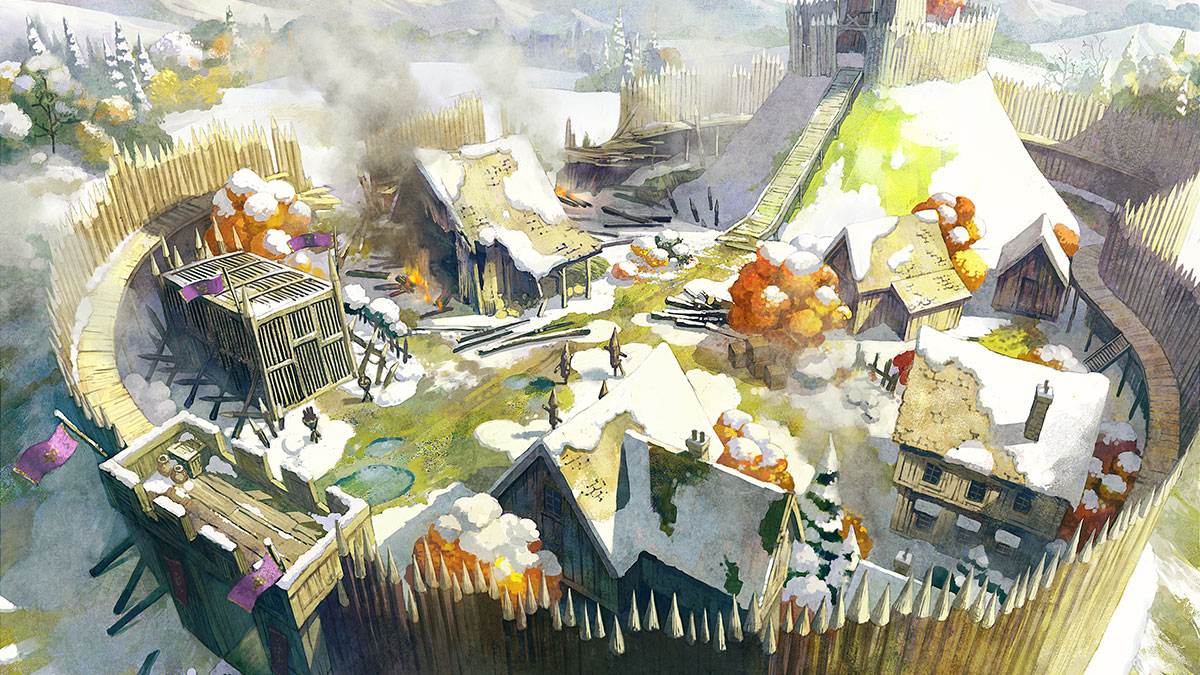Playing Tokyo RPG Factory’s I am Setsuna after spending 40 hours in The Legend of Zelda: Breath of the Wild was a revelation. It underscored just what is so good with traditional RPGs, and what is perhaps better left behind. Originally released in 2016 on consoles and PC, a port of I am Setsuna is a launch title for the Nintendo Switch. It provides a solid entry into filling out the available genres at the beginning of the system’s life, one that is a throwback to the strengths of the games on the SNES, before Nintendo lost the JRPG crown to Sony’s platforms.
It also shows the strength and power of the system, in supporting a full-blown title that you can take with you on the go. It’s both an attempt to continue the traditions long established in RPGs while making them relevant for modern gaming. It thrusts itself up there with the best RPGs ever, but does it ever get that high? Let’s find out.
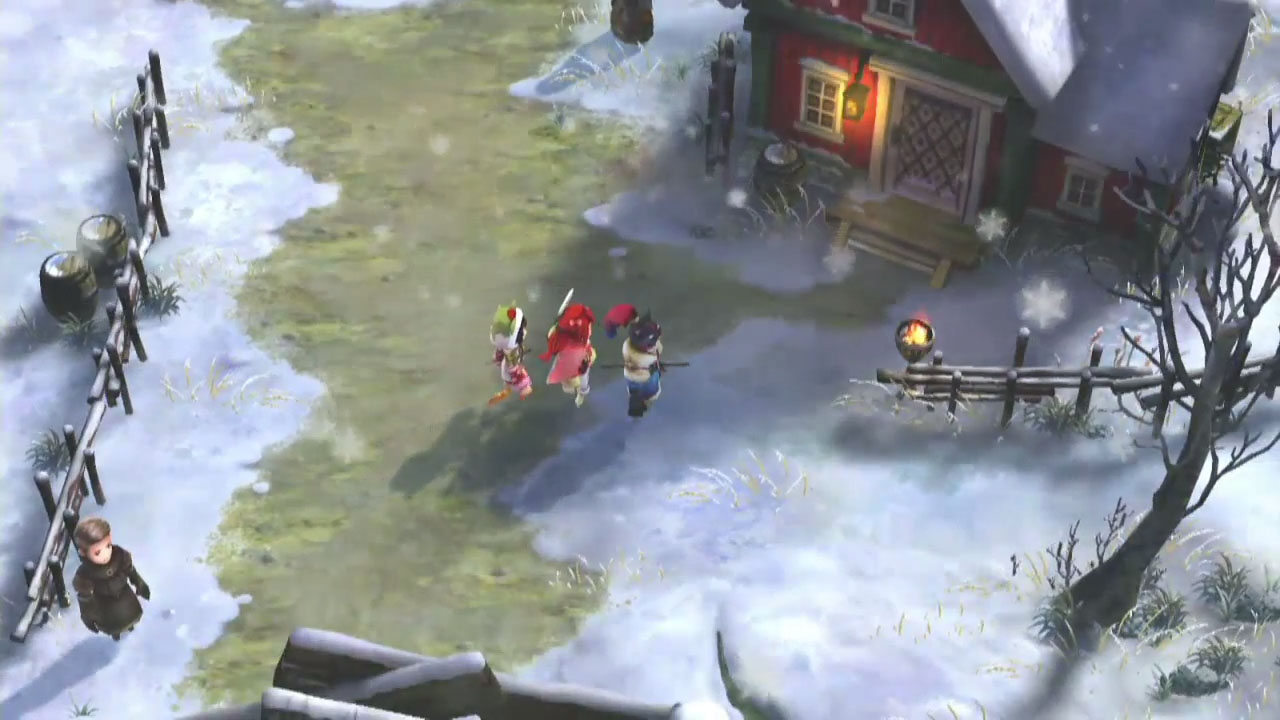
The game begins with a quest to kill the Sacrifice, women from a small village destined to give their lives in service to [temporary] peace for all of humankind. Instead, you join the Sacrifice’s Guard as the Sacrifice, the eponymous Setsuna, makes the pilgrimage to the site of the ritual that will end her life. The set up is almost a direct rip-off of Final Fantasy X’s story, but fortunately the game does move on from the themes explored in Square’s earlier game. Like in Final Fantasy X, the world is tinged with a darkness and weight that gives a sense of authenticity to the world. Even in moments of triumph, there is always the reminder that in the end, you are moving Setsuna closer to her death.
The story is mercifully kept simple, and while of course there are place names and characters to remember, it doesn’t delve deep into incomprehensible proper nouns that you need to read books of lore to even understand (here’s looking at you, Final Fantasy XIII) what’s going on.
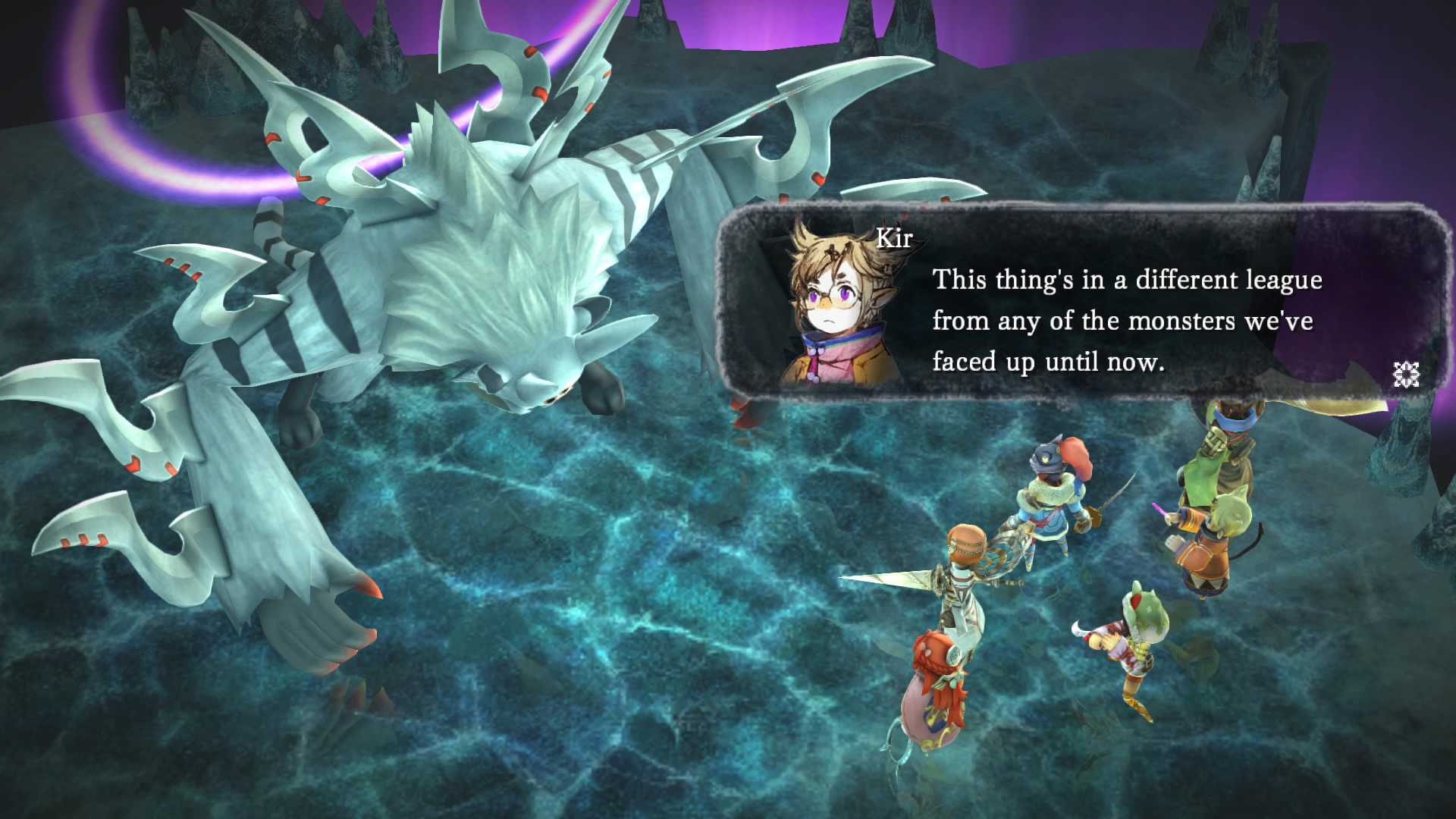
During my time with the game, it was hard to believe that I was carrying around a full-fledged RPG in my hands. Playing this sort of game on the go is exactly where the Nintendo Switch shines. Being able to put in five minutes here or there was extremely useful. While there are of course a huge number of fantastic RPGs that have appeared on handheld consoles before [I remember hours poured into Breath of Fire and Golden Sun, for example], I would venture that none have the graphical prowess of I am Setsuna. Instead of a “made for handheld” feel, there is a comfortable satisfaction that you have the full package. Perhaps ironically it’s the same feeling that you get when playing the proper handheld version of a mobile game.
Graphical downgrades on the Switch compared to the PS4 are minor, with the exception of the move to a 30-frames-per-second cap. While disappointing, this isn’t an action RPG where 60 frames would be of actual gameplay benefit, and I believe was the right choice in terms of compromises for the developers to make. Otherwise the game looks great. Complaints about the monotonous art direction of the game as a whole aside, in handheld or tabletop colours pop and nicely highlight the snow-covered world of I am Setsuna.
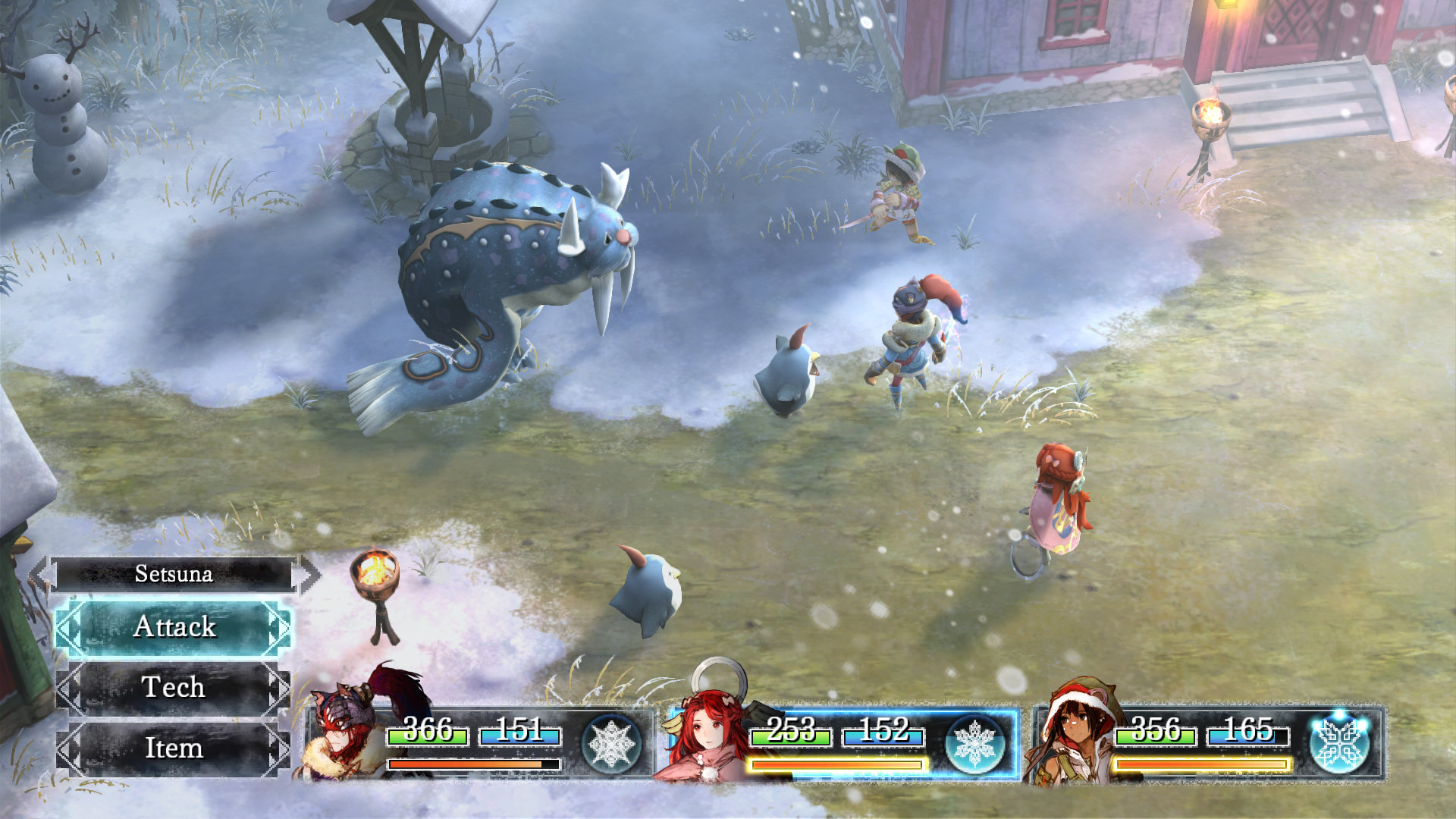
One of the most important elements of a good JRPG is the combat system. Good ones learn from what comes before, don’t change what’s good, and yet still manage to find some innovation that drives the genre forward. In I am Setsuna, we see a bit of all these elements. The battle system is a deliberate attempt to recreate what was successful with the great and standard-setting Chrono Trigger for the Super Nintendo. Like most other traditional (or traditional-focused) JRPGs, combat turn-based, although you can choose in the settings between the active and non-active battle system, with the default set to wait. There’s some sense of area in the combat field and positioning but there’s no clear area of effect indicator, so you have to hope and guess that your MP won’t be wasted on an attack that only hits one enemy. This was a particular bugbear of mine, as it meant I often wasted mana.
Your combat abilities are not learned per se, but bought with the fruits of victory from merchants and attached as “spritenites.” This allows a fluid and varied tech and ability system, and felt better than an endless tech tree where I’m afraid one bad choice could spoil everything. In the end, the combat is a hodgepodge of various RPG elements from a number of recent and not-so-recent JRPGS, but that doesn’t matter. While it doesn’t particularly stand out, fights felt fluid and that I had exact control over what’s happening.
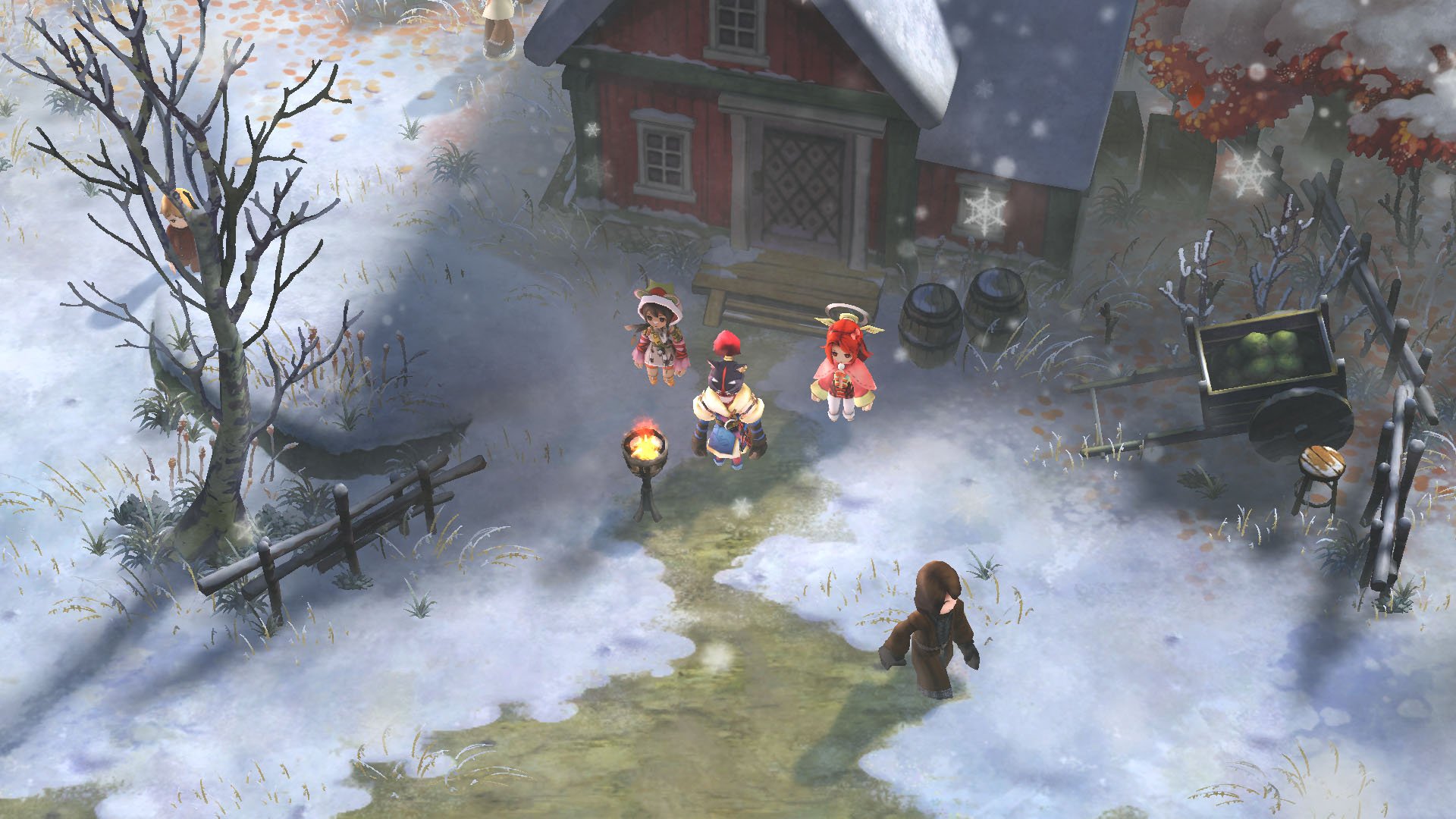
Much like the deliberately monochromatic art style, the music in I am Setsuna follows a similar path. Led entirely by the piano, it leads to come delicate moments, and I was impressed with the variety of expression the pianist was able to convey. Sometimes though, it did feel that the single instrument was playing covers of pieces designed for much larger ensembles. While there were no specific stand-out tracks, the overall work does much to complement the bare aesthetics of the wintertime.
So, does I am Setsuna reach the heights of the games that it clearly takes so much direction from? Well, no, but that’s an awfully unfair comparison to make. For a first-time effort from a newly-established studio, I am Setsuna sets a very high bar of quality for any future efforts. For a first shot, it’s remarkable. It’s proof that the studio is able to deliver and makes me excited for their future efforts. For a JRPG this first punt is on the shorter side, but you will get get 15 hours to spend with Setsuna and her Guard. I think it wise to start smaller, shorter, and contained. The developer’s next game will surely be bigger, better and more varied. This Tokyo RPG Factory has opened for business.
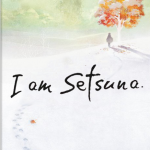
Released: March 2017
Rating: PG
Platforms: Nintendo Switch
Genre: RPG
Developer: Tokyo RPG Factory
Publisher: Square Enix</p

